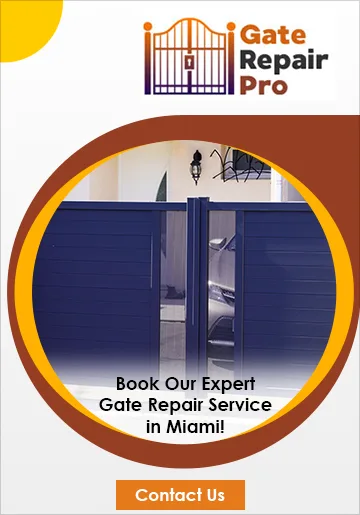Automatic gates provide convenience and security, but like any mechanical system, they can encounter issues over time. Understanding how to troubleshoot common problems is essential to ensure your gate functions smoothly. Troubleshooting an automatic gate involves identifying and addressing various issues that may be causing the malfunction. Here's a step-by-step guide to help you troubleshoot common problems with automatic gates:
Your Sensors are Not Working Very Well
When troubleshooting an automatic gate with sensors that are not working effectively, start by examining the alignment and condition of the sensors. Misalignment is a common issue that can lead to erratic sensor behavior. Ensure that the sensors are properly aligned, facing each other, and free from any obstructions. Clean the sensor lenses to remove dirt or debris that might be obstructing their function. Additionally, inspect the wiring connecting the sensors to the control panel for any damage or loose connections. Sometimes, environmental factors such as sunlight, reflections, or even insects can interfere with sensor performance. Consider adjusting the sensitivity settings on the control panel to optimize sensor performance for your specific environment. If the problem persists, consult the user manual for your gate system or seek assistance from a professional technician to diagnose and resolve the sensor issues accurately.
You Are Hearing Noise When You Open/Close Your Gate
If you are hearing unusual noises when opening or closing your automatic gate, it is crucial to investigate the source of the sound to prevent potential damage to the gate components. Start by checking the gate track and rollers for any signs of wear, debris, or misalignment. Noises might be caused by friction or uneven movement along the track. Lubricate the rollers and hinges with a suitable, non-corrosive lubricant to reduce friction. Inspect the gate motor and gearbox for any unusual sounds or signs of wear. Grinding or scraping noises could indicate an issue with the motor or gearbox that may require professional attention. Additionally, examine the gate structure itself for loose bolts, nuts, or brackets that could be causing rattling sounds during operation. Regular maintenance, such as tightening loose components and addressing lubrication needs, can contribute to a smoother and quieter operation of your automatic gate. If the noises persist or if you are uncertain about the cause, it is advisable to consult a professional technician for a thorough inspection and appropriate repairs.
Your Automatic Gate is Broken and Breaking Down Regularly
If your automatic gate is consistently breaking down, it signals a recurring issue that needs systematic troubleshooting. Start by reviewing the gate's maintenance history and identifying patterns in the breakdowns. Inspect critical components such as the gate motor, control board, sensors, and wiring for signs of wear, damage, or loose connections. Frequent breakdowns may result from overloading the gate motor, misaligned components, or electrical issues. Ensure that the gate is operating within its specified weight capacity and that there are no obstructions hindering its movement. Regularly clean the gate track, lubricate moving parts, and address any environmental factors that might impact performance. If the gate continues to experience problems, it's advisable to consult with a professional gate technician who can conduct a comprehensive assessment, identify root causes, and implement necessary repairs or replacements to enhance the gate's reliability and longevity. Regular preventative maintenance is key to minimizing breakdowns and ensuring the smooth operation of your automatic gate.

Check Power Supply
Ensure that the gate is receiving power. Check the main power source, fuses, and circuit breakers.
Verify that there are no power outages or interruptions.
Remote Control Issues
Replace the batteries in the remote control.
Check for any obstructions between the remote control and the gate receiver.
Manual Operation
If your gate has a manual override, try operating it manually to determine if the problem is with the motor or the gate itself.
Obstruction Detection
Modern automatic gates are equipped with sensors to detect obstructions. Check for any obstacles in the gate's path, such as debris, leaves, or other objects.
Sensor Alignment
Ensure that the safety sensors are properly aligned. Misalignment can prevent the gate from closing or cause it to reverse unexpectedly.
Gate Track and Rollers
Inspect the gate track and rollers for any debris or damage. Clean the track and lubricate the rollers if necessary.
Limit Switch Adjustment
Check the limit switches that control the open and close positions of the gate. Adjust them if needed to ensure proper gate movement.
Motor and Gearbox Inspection
Examine the gate motor and gearbox for any signs of damage or wear. If you notice unusual noises, it may indicate a problem with these components.
Control Board and Wiring
Inspect the control board for burnt components or loose connections. Check the wiring for any visible damage.
Remote Control Programming
If your gate uses a programmable control panel, verify that the remote controls are programmed correctly.
Weather Conditions
Extreme weather conditions such as heavy rain, snow, or extreme temperatures can affect the operation of automatic gates. Ensure that your gate is designed to handle these conditions.

Professional Assistance
If you are unable to identify or fix the problem, consider seeking assistance from a professional gate technician or installer.






